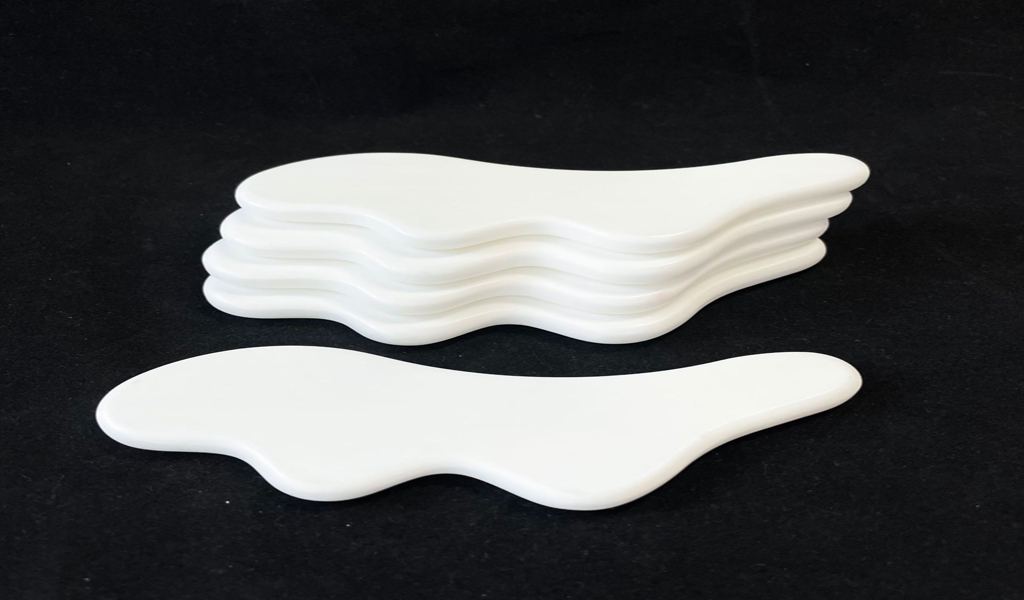Cermets are composite materials composed of one or more ceramic phases and metal phases or alloys. Ceramic phase generally refers to high melting point oxides (alumina, beryllium oxide, magnesium oxide, zirconium oxide, etc.) and refractory compounds (titanium carbide, tungsten carbide, tantalum carbide, boron carbide, zirconium diboride, titanium diboride and Tantalum diboride, etc.). The metallic phases are mainly transition elements (iron, cobalt, nickel, chromium, molybdenum, tungsten, vanadium, niobium, tantalum, etc.) or their alloys. The ceramic phase accounts for about 15% to 85% of the volume. Cermet not only has the advantages of metal toughness, high thermal conductivity and good thermal stability, but also has the characteristics of high temperature resistance, corrosion resistance and wear resistance of ceramics. However, due to the difference in composition and proportion, the properties of various cermets are also different.
Cermets are divided into two categories according to different substrates:
Ceramic based cermet
- ①Oxide-based cermets: based on alumina ceramics, zirconia ceramics, magnesia ceramics, beryllium oxide ceramics, thorium oxide ceramics, etc. as the matrix, they are composite materials with metal tungsten, chromium or cobalt, etc. Advantages such as chemical resistance, high mechanical strength and good thermal conductivity. Alumina-tungsten-chromium cermets can be used as bushings for missile nozzles, zirconia-titanium can be used as crucibles for smelting metals, alumina-magnesia-iron, alumina-molybdenum (nickel, cobalt, iron, chromium) can be Used as high-speed cutting tool (see color picture), thorium oxide-titanium oxide-chromium-molybdenum can be used as high-temperature mechanical seal ring, etc.
- ②Carbide-based cermet: It is formed by bonding carbide and metal. Carbides include titanium carbide, silicon carbide, and tungsten carbide. Titanium carbide is the most widely used material in this type of cermet. Using titanium carbide as the base frame, impregnating superalloys can make turbine blades; bonding with cobalt, nickel, and chromium can make high-hardness cutting tools, high-temperature bearings and sealing rings, block gauges, wire drawing die sets, etc.
- ③ Nitride-based cermets: there are titanium nitride, boron nitride, silicon nitride and tantalum nitride. These substances have superhardness (except boron nitride), thermal shock resistance and good high temperature creep properties. In addition, there are silicide-based cermets and boride-based cermets, but these two are used less often. Among the above categories, oxide-based cermets and titanium carbide-based cermets are widely used.
Metal-phase-based cermets:
There are sintered aluminum (aluminum-alumina), sintered beryllium (beryllium-beryllium oxide) and TD nickel (nickel-thorium oxide). This is the addition of fine powder of oxide to the metal to produce dispersion strengthening, which is called dispersion strengthening material. The content of alumina in sintered aluminum is about 5% to 15%. Its high temperature strength is higher than that of alloy aluminum, its density is lower, it is easy to process, has corrosion resistance, and has good thermal conductivity. Commonly used in aircraft and missile structural parts, engine pistons, chemical machinery and equipment and deep well drilling pipes, etc.
Cermet production process
Cermets are slightly different due to different varieties. For example: the manufacture of oxide-based cermets is to mix the prepared metal powder and oxide raw materials to a suitable particle size by ball milling, grouting and extrusion using ceramic molding methods. , semi-dry pressing or isostatic pressing, drying, and then sintering in vacuum, reducing atmosphere or inert atmosphere.
Pintejin machining ceramic service include : Alumina Ceramic Parts, Zirconia Ceramic, Silicon Carbide Ceramic, CNC Machined Aluminum Nitride Ceramic, Machinable Ceramic Parts, Glass Ceramic,Macor Ceramic,Powder Metallurgy Dies,Ceramic Injection Molding,Ceramic Dry Pressing,Ceramic Extrusion Dies





